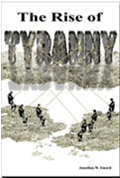DOMESTIC VIOLENCE POLICY: WRONG DIAGNOSIS, WRONG TREATMENT
By
Attorney Robert Franklin
November 5, 2012
NewsWithViews.com
As October, Domestic Violence Awareness Month, draws to a close, it seems like a good time to reflect on domestic violence policy. Predictably, the month brought an unusually high number of claims about domestic violence that just don’t hold up under even minimal scrutiny. For example, the oft-quoted statistic that “one in three” women will become victims of domestic violence in their lifetimes, can only be made by defining “domestic violence” so broadly as to make the term all but unrecognizable to the English-speaking public. To get to the “one in three” figure, studies use definitions of domestic violence that involve no violence whatsoever.
Therefore, “domestic violence” is often defined as “a pattern of behavior that seeks to control the activities of the other person.” So if a husband repeatedly encourages his wife to stop buying so many shoes because household finances don’t permit it, he’s not being fiscally prudent, he’s committing an act of domestic violence. The same holds true for his asking her to stop spending time with the heroin addicts down the street. That’s not the act of a sensible and loving husband who doesn’t want to see his wife in prison. No, it’s an act of domestic violence.
Now, I suspect that the great majority of people who read about domestic violence in the newspapers don’t know that the word “violence” doesn’t necessarily mean “violence.” To encourage this misunderstanding, the domestic violence industry – i.e. that vast array of shelters, non-profit organizations, foundations, advocates, etc. that feed at the government’s deep DV trough – often substitutes the word “battering” for the word “violence.” It’s more graphic, suggesting repeated heavy blows, and serves to deflect attention from the fact that much of domestic violence has nothing to do with, well, violence.
There’s a reason for all of this misrepresentation of course - money. The federal government alone spends about $1 billion a year on domestic violence “awareness” and “prevention,” and when the contributions of state governments, private foundations and individuals are added in, the total is more like $2 billion. With that much at stake, it simply won’t do to admit that the problem of domestic violence, while terribly real, just isn’t as big as it’s made out to be.
So, when Scotland recently conducted a large-scale survey of domestic violence, it found that, while 5% of men and 5% of women said they’d been victimized in the previous 12 months, only 20% of those, i.e. 1% of the total, had sustained any injury greater than “a minor cut or bruise.” Similar figures came out of the most recent study done for the Centers for Disease Control. In other words, about 80% of what we throw billions of dollars at every year consists of harm that wouldn’t require a Band-Aid were it caused by something else. Needless to say, the domestic violence industry has no intention of admitting those facts.
But of course, real, injurious domestic violence does exist. Men and women are killed and seriously injured by intimate partners every day and, just like any crime of violence, it is emphatically the duty of government to try to eradicate - or at least greatly diminish – its incidence. But we don’t. In fact, were we to ask the proverbial space alien for his analysis of our approach to the problem of domestic violence, he’d tell us that we obviously like domestic violence very much since we do so much to perpetuate it.
He’d say that in part because we adamantly refuse to admit who commits domestic violence and against whom. After all, for some 37 years we’ve known from an ever-growing body of social science that men and women are equally likely to commit domestic violence, and yet essentially all of domestic violence policy assumes that men abuse women, but not the other way around.
That of course radically skews resources away from men and toward women, but the frank sexism of domestic violence policy is only part of the problem. Far worse is the fact that, by denying women’s commission of domestic violence, the system paradoxically ensures that women will continue to be victimized. Studies show that women are often injured, not because men initiate violence, but because women do. According to one such study for the Centers for Disease Control, about half of domestic violence involves one person hitting and the other refusing to respond in kind. In those cases, about half the perpetrators are men and the other half women.
When violence is reciprocal however, about 70% of the time it’s the woman who initiates the violence. In those cases, the man responds, often resulting in injury to the woman. The obvious lesson? Teach women to refrain from initiating violence and you’ll save a lot of them from being hurt.
But nowhere do we teach that simple lesson that could save so many women from injury. The space alien sees the matter clearly – we say we want to stop domestic violence, we say we want to protect women, but we adopt a narrative of domestic violence and policies to fit, that ensure that incidents of domestic violence won’t decrease and that women will continue to be hurt. The necessary conclusion is that we don’t really want to reduce domestic violence and we’re not very concerned about women’s victimization. Into the bargain, we’re utterly indifferent to the injury of males by their intimate partners.
When it comes to “treatment” of perpetrators, it’s more of the same. Being the savvy guy he is, our space alien knows that psychologists have some very good ideas about who commits domestic violence, why they do and how to correct their behavior. So he’s understandably shocked at the facts that (a) those psychological interventions are almost uniformly ignored when “treating” perpetrators of DV and (b) women who assault their partners receive essentially no services for their problem.
All of that is because, from the start, the domestic violence industry has defined domestic violence in terms of political ideology instead of scientific reality. That ideology holds that men use domestic violence to keep women subservient. The fact that there’s essentially no evidence for the proposition and mountains of evidence against it troubles the movement not at all.
| Subscribe to the NewsWithViews Daily News Alerts! |
As the reputable DV researcher Dr. Donald Dutton once said, when confronted with the claim that DV is not a psychological issue, “Everything about this statement is wrong- it is a political statement not a scientific one. There is substantial evidence that Intimate Partner Violence is related to 1) attachment insecurity 2) anger and depression 3) personality disorder 4) alcohol/substance abuse.
So, having misdiagnosed the problem, it’s no surprise that our efforts to address it come up empty. The domestic violence industry weeps for victims, but they’re crocodile tears. If they really wanted to fix the problem, they’d admit that women initiate violence as often as do men and take real steps to help victims and perpetrators of both sexes. Until they do, the problem of domestic violence will continue and taxpayer’s money will be wasted.
� 2012 - Robert Franklin - All Rights Reserved












 Share
This Article
Share
This Article





